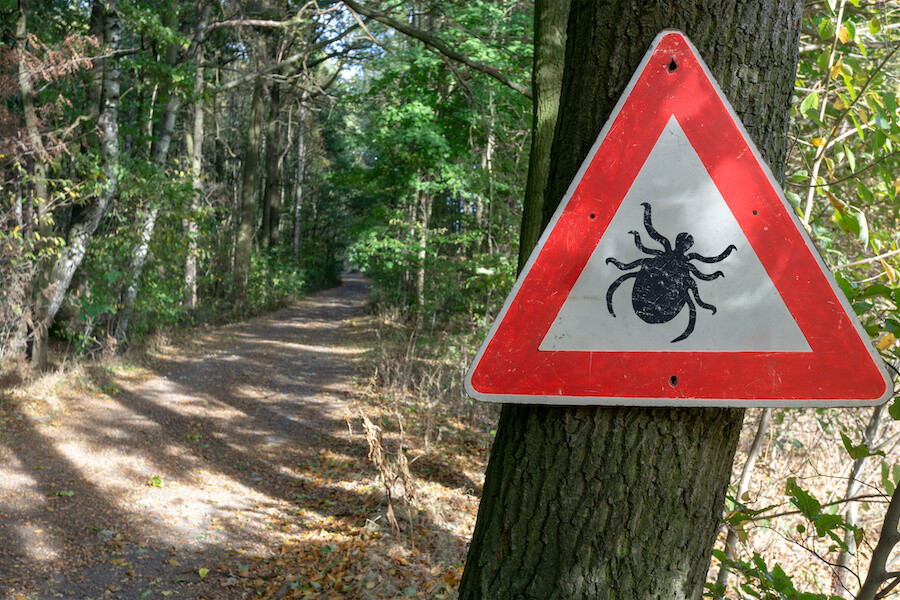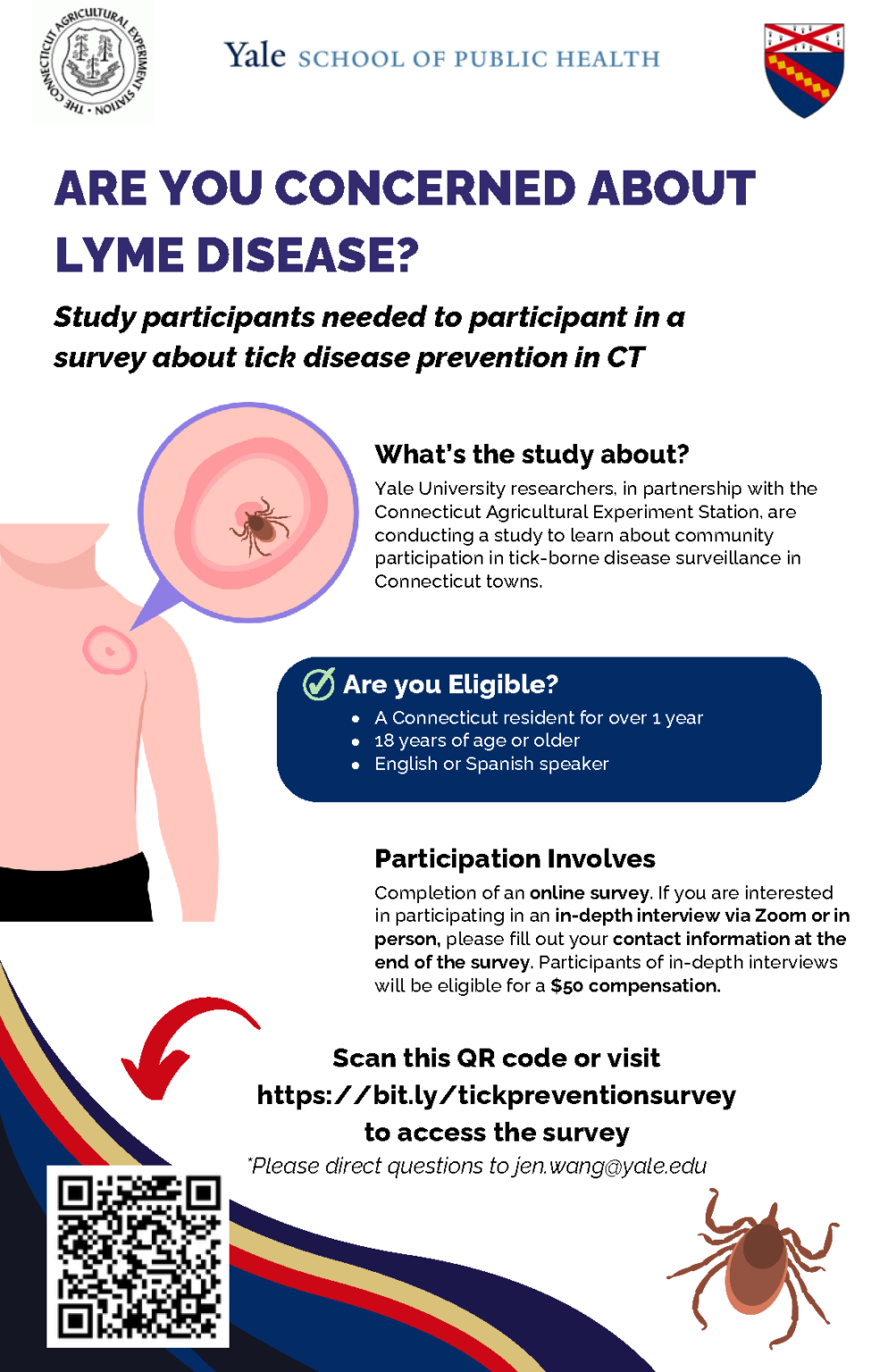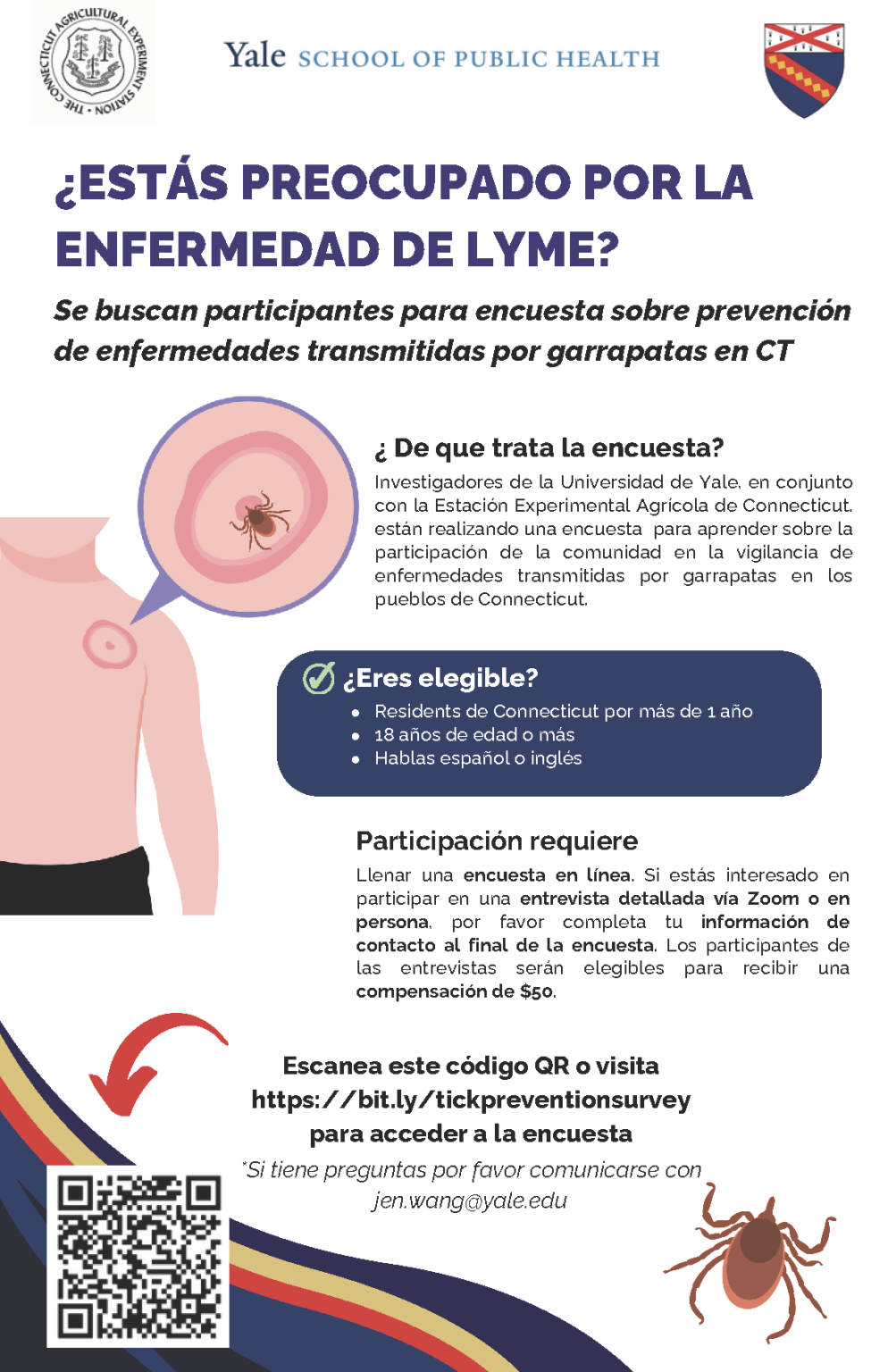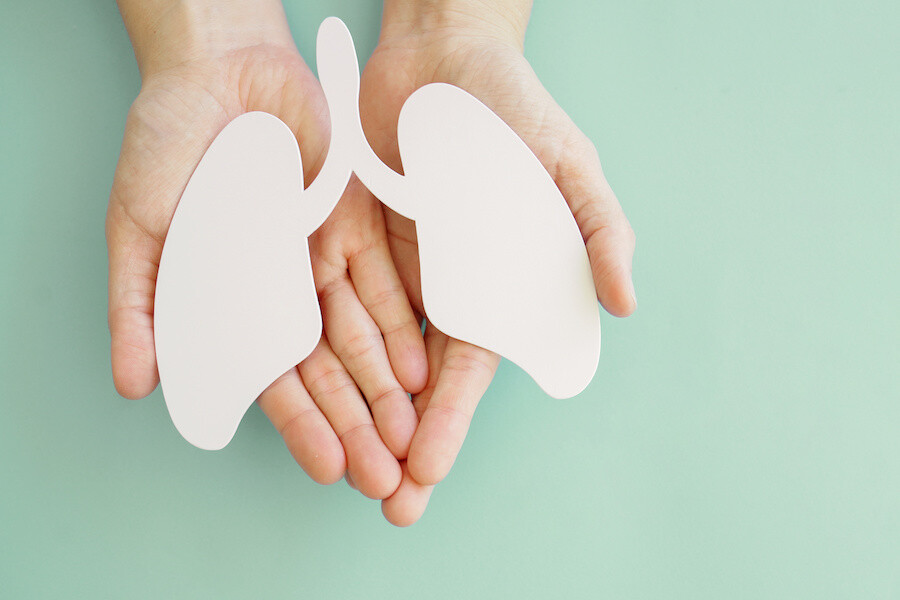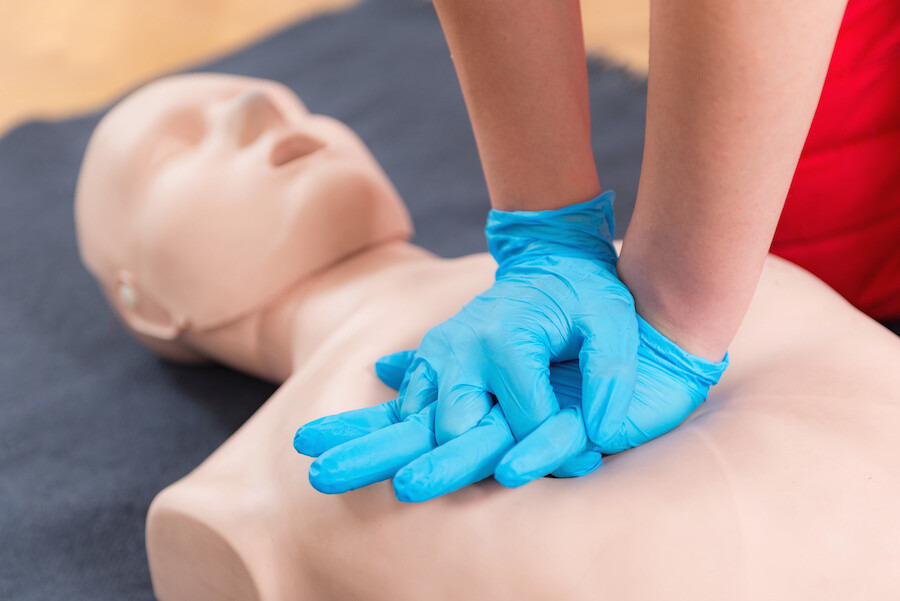Latest UNCASHD News
National Public Health Week: Five Fantastic Public Health Campaigns
As we celebrate the 29th annual National Public Health Week from April 1-7, 2024, it’s a time for both celebration and reflection. Over the past three decades, some really remarkable public health campaigns have emerged, leaving an indelible mark on society by fostering safer, stronger, and healthier communities. Let’s take a moment to acknowledge and applaud five of these transformative initiatives:
1. Safe to Sleep®
Safe to Sleep® (formerly Back to Sleep) encourages parents and caregivers to place babies to sleep on their backs to reduce the risk of sudden infant death syndrome (SIDS). The national campaign began in 1994, and shared critical information about infant sleep through PSAs on 6,700 radio stations and 1,000 TV stations, and collaborated with 250,000+ childcare centers nationwide. In 2020, there were about 1,400 deaths due to SIDS in the U.S.*
Learn more about safe sleep for babies
*Source: Data and Statistics for SIDS and SUID | CDC
2. The Heart Truth®
In 2002, The National Heart, Lung, and Blood Institute (NHLBI) created The Heart Truth® campaign, designed to raise awareness about heart disease as the leading cause of death in women. The campaign originally focused on women aged 40‒60, with an emphasis on reaching women of color, and has now expanded awareness efforts to educate younger women on the benefits of a heart-healthy lifestyle. In 2003, the campaign introduced the Red Dress® as the national symbol for women and heart disease, and the campaign holds special events throughout American Heart Month each February to help raise awareness. Studies show women’s heart disease awareness has doubled since 2002, but it remains the leading cause of death for women in the United States.*
Learn more about ways to protect your heart health.
*Source: About The Heart Truth®
3. It Can Wait
In 2010, AT&T® launched the It Can Wait® campaign to help stop distracted driving. The campaign urged people to pledge not to drive distracted, with 40M+ pledges to date. It Can Wait® partnered with schools to promote the pledge among young people and released a video series featuring people directly impacted by distracted driving. In 2019, 424,000 people were injured in crashes involving a distracted driver in the United States, and distracted driving causes nearly 3,000 deaths in the United States each year.*
Learn more about recognizing and preventing distracted driving
*Source: Distracted Driving | Transportation Safety | Injury Center | CDC
4. Hear Her®
In 2020, the CDC launched the Hear Her® campaign to raise awareness of warning signs for pregnancy-related complications and encourage better communication between pregnant people and their healthcare providers. The campaign has developed informational posters and handouts in nearly 20 languages and features videos of women sharing their personal pregnancy stories and how they got help. Hear Her® encourages everyone to listen to pregnant women when they say something doesn’t feel right because acting quickly can save a life. More than 80% of pregnancy-related deaths in the United States can be prevented¹ yet over 700 women still die each year as a result of pregnancy complications².
Learn more about signs of pregnancy-related complications.
(1) Source: About the Campaign (2) Source: PubMed (nih.gov)
5. The truth®
The truth® campaign began in 2000 by the Truth Initiative (formerly the American Legacy Foundation) and aims to decrease youth smoking. With messaging and marketing rooted in youth culture, the campaign uses provocative videos, digital media, unique merchandise, and “truth trucks” at sports and music venues to share educational information about the harms of smoking. Since its launch, the campaign has contributed to multiple research reports, funded prevention and quitting projects for underserved populations, and expanded its focus to include vaping prevention. Currently, nearly 3 million youth use a tobacco product of any kind.*
Learn more about reducing smoking and vaping
*Source: Annual National Youth Tobacco Survey | FDA
Reminder: Temporary Food Service License Applications Must Be Submitted 14 Days in Advance
As the warm weather approaches, we enter a season of outdoor events, festivals, and celebrations. From food trucks to music festivals, these gatherings are a beloved part of our local culture, bringing people together to enjoy good food, music, and community. However, behind the scenes, there’s an essential aspect that ensures these events are not only enjoyable but also safe — the permitting process.
At the heart of this process lies the Temporary Food Service License Application. These licenses play a crucial role in safeguarding the health and well-being of attendees, and their applications must be submitted within a specific timeframe in order to be approved.
Temporary Food Service License Applications should be submitted at least 14 days in advance of the event. This timeframe allows the Uncas Health District the necessary time to review the application thoroughly, conduct any required inspections, and ensure that all health and safety regulations are met. It’s not just about paperwork – it’s about making sure that every event is held in a safe environment, free from potential health hazards.
But what happens if an event organizer misses the 14-day window? Uncas Health District aims to incentivize timely submissions while still allowing for some flexibility. Temporary Food Service License Applications submitted less than 14 days but more than five business days before the event may still be approved, but the fee amount will be doubled. This additional fee helps cover the extra resources required to expedite the processing of these last-minute applications.
However, there must be a cut-off for applications. Applications submitted within five business days of the event will not be issued a temporary food service license. This is because there is simply not enough time to properly review the application, conduct inspections, and address any potential issues that may arise. While it may seem stringent, it’s a necessary measure to uphold the standards of safety and health for all event attendees.
This policy is reflective of our commitment to the well-being of our community. The Uncas Health District understands the importance of these events in bringing enjoyment and vitality to our neighborhoods. Still, it also recognizes the responsibility to ensure that these gatherings are held in safe and sanitary conditions. By adhering to these guidelines, event organizers play a crucial role in creating an environment where everyone can enjoy themselves without worry.
As we eagerly anticipate the upcoming season of festivities, let’s remember the importance of prioritizing health and safety. By working with the Uncas Health District and submitting temporary event permit applications in a timely manner, we can all ensure a spring, summer, and fall full of really great community celebrations.
You can find the temporary food service license application here.
Think. Test. Treat TB: World Tuberculosis Day – March 24th
Every year, on March 24th, we seek to raise awareness about tuberculosis (TB), a serious but preventable and treatable infectious disease. This year, Uncas Health District is asking residents of eastern Connecticut to “Think, Test, and Treat TB” — understanding the importance of early detection and treatment to stop the spread of Tuberculosis.
Tuberculosis remains a significant global health threat. In 2022, more than 10 million cases of TB were reported worldwide, and 1.3 million people died from the disease. In the United States, while TB cases have been on the decline, there were increases in reported cases in both 2021 and 2022. In 2022, there were 8,331 tuberculosis cases reported in the U.S.
A Local Perspective
While Tuberculosis is a global health concern, Connecticut has done a very good job at staying on top of active cases — leading to some of the lowest TB rates in the U.S. In 2022, Connecticut reported just 67 of the nation’s more than 8,300 cases — with just four reported in New London County.
Despite the low number of cases in Connecticut, it is important that people remain vigilant in the prevention of the spread of Tuberculosis. Much like the national numbers, the state’s reported cases in 2022 showed a 24% increase over 2021. Local health departments, such as Uncas Health District, continue to be excellent resources for those with questions or concerns about Tuberculosis.
Think. Test. Treat TB.
This year, we are highlighting three critical steps in the fight against Tuberculosis:
- Think: Be aware of the risk factors for TB. These include close contact with someone with TB, having a weakened immune system, being from a country with high TB rates, and substance abuse.
- Test: If you experience symptoms like a persistent cough, weight loss, night sweats, or fever, get tested for TB. A simple skin test or blood test can diagnose TB infection.
- Treat: If you are diagnosed with TB, it’s crucial to complete the full course of antibiotics, even if you start to feel better. Incomplete treatment can lead to drug-resistant TB, which is much harder to cure.
Latent TB Infection vs. TB Disease
It’s important to understand the difference between latent TB infection and TB disease:
- Latent TB Infection: People with latent TB infection have the TB bacteria in their bodies but are not sick and cannot spread the disease to others. The immune system usually keeps the bacteria in check, preventing them from multiplying. However, people with latent TB infection can develop TB disease if their immune system weakens.
- TB Disease: People with TB disease are sick and can spread the bacteria to others through coughs and sneezes, so this is why the “THINK. TEST. TREAT” message is so important to remember.
Early detection is key to stopping the spread of Tuberculosis. If you think you might be at risk for TB, talk to your doctor about getting tested. Early diagnosis and treatment can prevent TB disease and save lives.
Additional Resources:
- Centers for Disease Control and Prevention (CDC) TB webpage: https://www.cdc.gov/tb/default.htm
- World Health Organization (WHO) TB webpage: https://www.who.int/health-topics/tuberculosis
A Springboard to Better Health: How Healthy Eating Makes a Difference
It’s National Nutrition Month, and what better time to celebrate the incredible power of food? The choices we make on our plates don’t just affect our taste buds; they have a profound impact on our overall health and well-being.
This month, let’s ditch the fad diets and focus on building a sustainable, healthy relationship with food. By prioritizing nutritious choices, we can empower ourselves to prevent chronic diseases and live life to the fullest.
Healthy Eating for a Healthy You
-
Disease Prevention Powerhouse: A diet rich in fruits, vegetables, and whole grains is packed with essential vitamins, minerals, and antioxidants. These play a crucial role in reducing the risk of chronic diseases like heart disease and type 2 diabetes.
-
Weight Management: Filling your plate with nutrient-dense foods keeps you feeling fuller for longer, reducing cravings and aiding in healthy weight management.
-
Energy Booster: Processed foods and sugary drinks might give you a temporary spike, but they often lead to crashes and leave you feeling sluggish. Healthy meals provide sustained energy to power you through your day.
-
Sharper Mind, Stronger Body: The right nutrients nourish your brain and nervous system, improving cognitive function and focus. Additionally, a balanced diet supports a strong immune system, keeping you protected from illnesses.
Making Healthy Choices Easier
-
Plan Your Meals: Taking some time each week to plan meals and snacks helps you make healthy choices in advance and avoid grabbing unhealthy options when you’re short on time.
-
Get Cooking: Experimenting in the kitchen allows you to control ingredients and portion sizes. Plus, it’s a fun way to explore new flavors and get creative!
-
Stock Up on Staples: Keep your pantry and fridge stocked with healthy essentials like fruits, vegetables, whole grains, and lean protein sources. This makes it easier to whip up nutritious meals on the go.
-
Read Food Labels: Don’t be fooled by marketing! Understanding ingredients and portion sizes allows you to make informed choices.
-
Make Small Changes: Start by incorporating small changes into your diet. Swap sugary drinks for water, add a side of vegetables to your lunch, or choose whole-wheat bread instead of white. Every healthy step counts!
National Nutrition Month is a springboard, not a finish line. By embracing healthy eating habits, you’re investing in yourself and your future. Remember, food is more than just sustenance; it’s a powerful tool for living a long, healthy, and fulfilling life. So, this month and beyond, celebrate the joy of healthy eating and fuel your body to reach its full potential.
Get the Lead Out: Testing and Screening for Lead Exposure
Lead poisoning is a serious health concern, especially for young children whose bodies and minds are still developing. Exposure to lead can have long-lasting negative consequences, including:
- Learning and behavior problems: Difficulty concentrating, hyperactivity, and decreased IQ.
- Developmental delays: Growth problems and delayed speech and language development.
- Hearing and vision problems: Lead exposure can even impact a child’s hearing and vision.
Unfortunately, lead is still present in our environment, and in Connecticut, this is of particular concern. Around 70% of the state’s housing stock was built before 1980, and lead paint was commonly used in homes constructed prior to 1978. This means the potential for lead exposure exists in many homes across Connecticut.
The only way to know if your child has been exposed to lead is through a blood test administered by a healthcare provider. Thankfully, Connecticut has taken a crucial step by mandating universal blood lead screening. This means all children in the state are required to be tested at least twice between the ages of 9 months and 35 months.
However, while this initial screening is crucial, only about 60% of children in Connecticut receive the recommended two tests before the age of 3. This is concerning because lead exposure can occur at any time during this critical developmental window.
Here’s what you can do to protect your child:
- Know your home’s history. If your home was built before 1978, consider getting it tested for lead paint. You can find resources and information on lead testing at https://portal.ct.gov/dph/Environmental-Health/Lead-Poisoning-Prevention-and-Control/Lead-Poisoning-Prevention-and-Control-Program.
- Schedule regular blood lead tests for your child. Talk to your pediatrician about getting your child tested at the recommended intervals, even if you don’t suspect lead exposure.
- Be aware of potential sources of lead exposure. While lead paint is the most common source, lead can also be found in soil, dust, and even some imported toys, foods, and products.
By taking these steps, we can work together to protect our children from the dangers of lead poisoning and ensure they have the healthy environment they need to thrive. Let’s make sure every child in Connecticut has the opportunity for a healthy start in life.
DPH: CDC Issues Updated COVID-19 Isolation Guidance
The Connecticut Department of Public Health (DPH) has adopted and recommends the COVID-19 isolation guidance that was issued by the Centers for Disease Control and Prevention (CDC) on Friday.
This updated guidance recommends that those who have COVID-19 should stay home until they’ve been fever-free without medication for at least 24 hours or their symptoms have been improving for 24 hours.
Since the start of the 2023—2024 respiratory virus season, DPH has taken a pan-respiratory virus approach to managing COVID-19, the flu, and RSV. This strategy has been consistent with the CDC guidance for managing viral respiratory diseases, including COVID-19, influenza, and RSV.
Additionally, prior to the start of the current school year, DPH partnered with the Connecticut State Department of Education to distribute operationalized CDC respiratory virus guidance to school nurses and superintendents.
Beyond the Statistics: The Untold Stories of Brain Injuries
March is Brain Injury Awareness Month, a time to shed light on the millions of Americans living with the effects of traumatic brain injury (TBI). While statistics tell part of the story, every one of the estimated 2.8 million Americans who sustain a TBI each year, and the 5 million living with TBI-related disabilities, has a unique story to share.
Behind the numbers are individuals and families navigating the challenges of a life forever changed. A seemingly ordinary fall, a car accident, a sports injury – any sudden impact to the head can lead to a TBI, impacting physical, cognitive, emotional, and social aspects of life.
While recovery is possible, the road can be long and arduous. Research shows that the five-year outcomes of individuals with TBI are:
- 22% deceased
- 30% worse off
- 22% unchanged
- 26% improved
These statistics highlight the vast spectrum of experiences after a TBI, emphasizing the need for both awareness and action.
Knowing about the common causes of brain injury can help us take preventive measures:
- Falls: The leading cause of TBI, especially in older adults.
- Motor vehicle crashes: A significant risk factor, particularly for individuals who ride motorcycles or bicycles.
- Violence: Assaults and sports injuries can contribute to TBIs.
Prevention strategies include:
- Wearing helmets during activities like cycling and riding motorcycles.
- Using fall prevention measures at home, especially in high-risk areas like bathrooms.
- Promoting child safety through car seats, bike helmets, and playground supervision.
If you or someone you know experiences a serious head injury, seeking immediate medical attention is crucial. Early diagnosis and intervention can significantly impact recovery and long-term outcomes.
During Brain Injury Awareness Month, let’s remember:
- Behind the statistics are individuals and families with unique stories.
- Brain injuries can have lasting impacts, but recovery is possible.
- Prevention measures can significantly reduce the risk of TBI.
- Early diagnosis and treatment are crucial for optimal outcomes.
By raising awareness, advocating for support, and encouraging preventive measures, we can create a safer environment and empower individuals living with TBI to reach their full potential. Remember, every story matters. Let’s listen, learn, and support.
Learn More About Brain Injuries from the Brain Injury Alliance of Connecticut.
Uncas Health District Beats for Heart Health with Hands-Only CPR Training
This February, the dedicated staff at Uncas Health District showed their commitment to heart health by rolling up their sleeves and participating in a Hands-Only CPR training program, equipping themselves with a vital skill that could save lives. The Uncas Health District team understands the importance of equipping its staff with hands-only CPR training — and used this training as an opportunity to lead by example in promoting this life-saving skill.
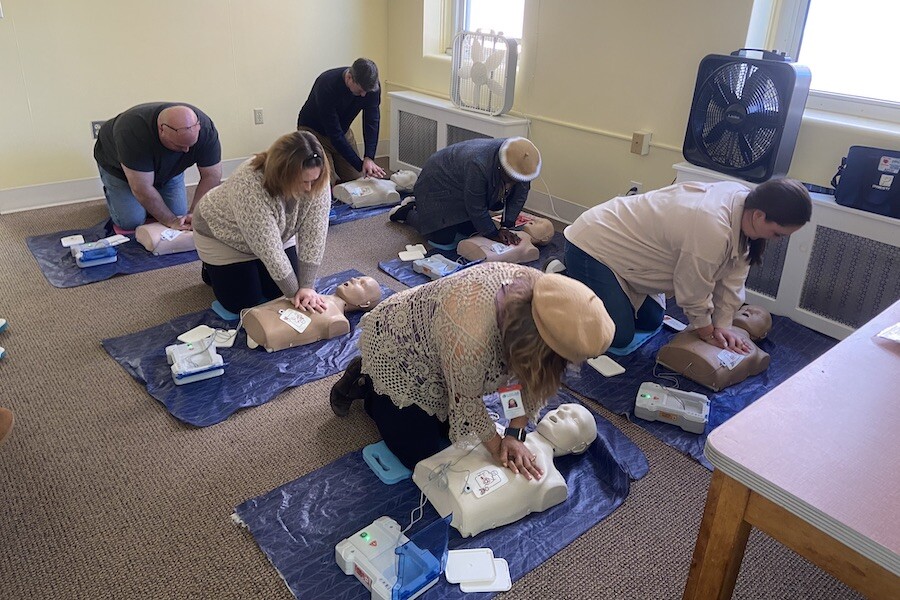
Why Hands-Only CPR?
While traditional CPR involves mouth-to-mouth resuscitation, Hands-Only CPR simplifies the process by focusing solely on chest compressions. This makes it easier for anyone, regardless of training or experience, to step in and make a difference during a cardiac emergency.
The Importance for Everyone
Heart disease remains the leading cause of death in the United States. Every minute someone experiences cardiac arrest, the survival rate significantly increases with immediate CPR. However, many people hesitate due to fear of performing incorrectly or lacking proper training. Hands-Only CPR removes that barrier, empowering bystanders to become heroes in critical moments.
How You Can Be Ready to Act in an Emergency
- Find a Hands-Only CPR training program: Many organizations, including the American Red Cross and the American Heart Association, offer free or low-cost training sessions. You can even find online resources and apps to guide you.
- Spread the word: Share your knowledge with friends, family, and colleagues. The more people who know Hands-Only CPR, the more lives can be saved.
Be prepared: Print out CPR instructions and keep them handy in your home, workplace, and car. Download CPR apps on your phone for quick reference.
Leap into Happiness and Health: Uncas Health District’s Guide for Leap Day
Leap Day, that extra day on February 29th, is a day to celebrate the unexpected! Why not use it as a springboard for launching a happier and healthier lifestyle? Here are some tips from Uncas Health District to help residents of Eastern Connecticut make the most of this special occasion:
Fuel Your Body:
- Leap into a new recipe: Explore a local farm stand or farmers’ market for fresh, seasonal ingredients. Try a recipe bursting with fruits and vegetables, or experiment with a new protein source like lean fish or beans.
- Pack a healthy picnic: Take advantage of the expected mild weather Leap Day and enjoy a delicious, nutritious lunch al fresco. Pack whole-wheat sandwiches, veggie wraps, fruit salad, and homemade trail mix for a satisfying and healthy feast.
- Hydrate for happiness: Carry a reusable water bottle and sip throughout the day. Staying hydrated improves energy levels, cognitive function, and even mood!
Move Your Body:
- Leap out and explore: Lace up your walking shoes and embark on a new adventure. Eastern Connecticut is full of scenic trails, parks, and historic sites to discover. Challenge yourself to a longer walk than usual, or try a new route.
- Get active indoors: Invite friends and family for a fun game of indoor basketball, badminton, or jump rope. Even a dance party in your living room can be a great way to get your heart rate up and have a laugh.
- Join a local fitness class: Many gyms and community centers offer free or discounted introductory classes on Leap Day. Try something new like Zumba, yoga, or Pilates to discover an activity you enjoy.
Nourish Your Mind:
- Start a gratitude journal: Take a few minutes each day to write down three things you’re grateful for. This simple practice can boost your mood and improve overall well-being.
- Connect with loved ones: Schedule a phone call, video chat, or in-person visit with friends and family. Social connection is essential for mental and emotional health.
- Get lost in a good book: Dedicate some time to reading a book that inspires, educates, or simply brings you joy. Curling up with a good read can be a relaxing and rewarding escape.
Remember:
- Small changes add up: Don’t feel pressured to overhaul your entire lifestyle at once. Start with small, sustainable changes that you can easily incorporate into your daily routine.
- Find what works for you: There’s no one-size-fits-all approach to happiness and health. Experiment and discover what activities and practices make you feel your best.
- Celebrate your progress: Acknowledge and celebrate your achievements, no matter how small. This will help you stay motivated and on track toward your goals.
Uncas Health District is committed to supporting the health and well-being of Eastern Connecticut residents. We encourage you to use Leap Day as a springboard for a happier and healthier you!
Bonus Tip: Share your Leap Day wellness activities on social media using #UncasHealthLeap and inspire others to join the movement!
Together, let’s make the Uncas Health District a healthier and happier place to live!
